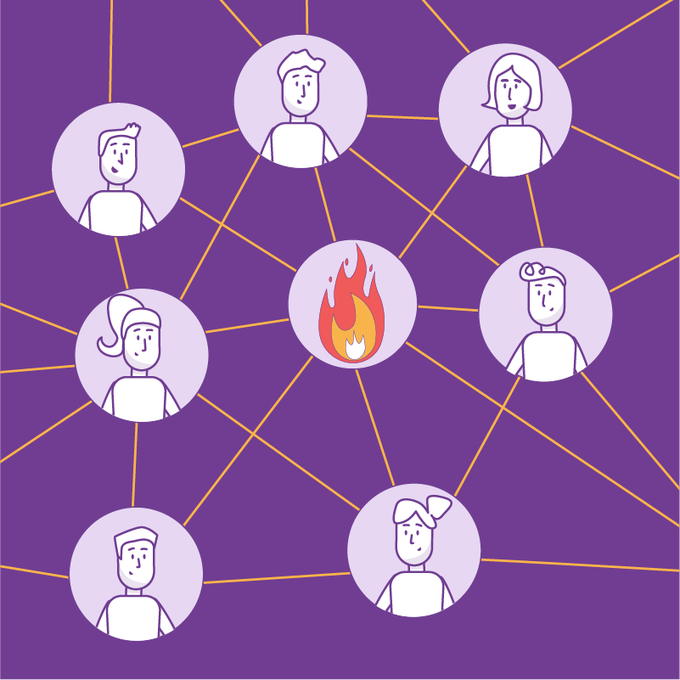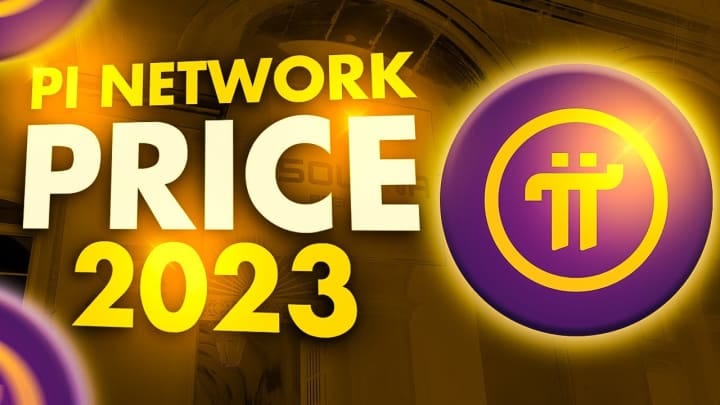Pi Network Challenges & Risks

Executive Summary

Pi Network, a cryptocurrency project aiming to make mining accessible to everyday smartphone users, presents a compelling vision but also faces significant challenges and risks. This article delves into the complexities surrounding Pi’s sustainability, value proposition, regulatory landscape, and overall future prospects. We’ll explore key concerns and offer insights to help readers understand the potential benefits and drawbacks associated with Pi Network participation. Understanding these factors is crucial for anyone considering engaging with this novel cryptocurrency project.

Introduction
Pi Network has attracted millions of users with its promise of effortless cryptocurrency mining. However, this seemingly simple approach masks a series of challenges related to its economic model, security, and long-term viability. The project operates in a unique space, blurring the lines between a traditional cryptocurrency and a community-driven initiative. This exploration aims to provide a balanced perspective, examining both the exciting potential and the inherent risks associated with Pi Network. Understanding these challenges is crucial for users to make informed decisions about their involvement.
FAQ
-
Q: Is Pi Network a legitimate cryptocurrency? A: While Pi Network is attempting to establish itself as a legitimate cryptocurrency, it’s crucial to understand that it’s still in its testing phase. Its value and future are uncertain, unlike established cryptocurrencies with proven track records and market acceptance.
-
Q: How can I get Pi coins? A: Pi coins are obtained through the Pi Network mobile app, where users perform simple tasks like pressing a button once a day. However, it’s important to note that these coins are not yet tradable on major exchanges, limiting their practical value.
-
Q: What are the risks associated with Pi Network? A: The risks include the uncertainty of Pi’s future value, the potential for scams, the app’s dependence on network growth for its success, and the significant technical hurdles it faces before mainnet launch.
Mainnet Launch and Scalability
Pi Network’s journey from a testing phase to a fully operational mainnet is fraught with challenges. Achieving scalability to handle millions of transactions securely and efficiently is a crucial hurdle. The project’s success hinges on overcoming potential bottlenecks and ensuring seamless operations once the mainnet launches. This will significantly impact its long-term usability and widespread adoption.
-
Technical Infrastructure: Building a robust and scalable blockchain infrastructure capable of handling a massive user base requires significant technical expertise and resources. Any technical failure could significantly impact the network’s credibility and functionality.
-
Transaction Speed and Fees: Achieving acceptable transaction speeds and low fees is crucial for mass adoption. If transaction processing is slow and expensive, it will hinder the network’s practicality and competitiveness compared to other cryptocurrencies.
-
Security Vulnerabilities: As with any blockchain network, Pi Network is susceptible to security vulnerabilities. Robust security measures must be in place to protect user accounts and prevent attacks like hacking or double-spending. Failing to address security concerns can lead to devastating consequences, eroding trust and potentially wiping out user holdings.
-
Ecosystem Development: A thriving ecosystem of applications and services built on the Pi Network blockchain is crucial for its long-term growth. The lack of developer engagement could significantly hinder the network’s potential.
-
Interoperability: The ability for Pi Network to seamlessly interact with other blockchains and cryptocurrencies is crucial for its accessibility and utility. Lack of interoperability can limit its potential for widespread adoption.
-
Mining Algorithm Efficiency: The simplicity of the Pi Network mining process, while attractive to users, raises questions about its energy efficiency and overall sustainability. Inefficient algorithms could limit the network’s scalability and environmental friendliness.
Value Proposition and Economic Model
The inherent value of Pi coins is a significant area of concern. The lack of a clear economic model and the absence of mainstream exchange listings raise questions about its long-term sustainability. This uncertainty poses significant risks for users investing their time and effort into the project.
-
Lack of Market Liquidity: The inability to easily buy, sell, or trade Pi coins on major exchanges creates a significant barrier to entry and limits their practical use. This lack of market liquidity significantly reduces their perceived value.
-
Inflationary Pressure: The project’s mining mechanism might lead to substantial inflation if not carefully managed, potentially diluting the value of existing Pi coins. A high inflation rate can render the cryptocurrency less attractive to investors and users.
-
Tokenomics and Distribution: The distribution model of Pi coins and the underlying tokenomics require careful consideration. An unbalanced distribution can lead to centralization and reduce the network’s decentralization goals.
-
Utility and Use Cases: The success of any cryptocurrency hinges on its utility and practical use cases. Pi Network needs to demonstrate clear and compelling real-world applications to justify its value and attract adoption.
-
Community Trust and Governance: Maintaining community trust and establishing effective governance mechanisms is crucial for the network’s longevity and success. Lack of transparency or effective decision-making processes could undermine community support.
Regulatory Compliance and Legal Risks
Navigating the complex regulatory landscape of cryptocurrencies presents significant challenges for Pi Network. Its operations and future development are subject to potential legal scrutiny in various jurisdictions, which could impact its accessibility and overall sustainability.
-
Securities Regulations: Pi Network may be subject to securities regulations in different countries, potentially impacting its fundraising activities and token distribution. Non-compliance with securities laws could result in significant legal repercussions.
-
Anti-Money Laundering (AML) and Know Your Customer (KYC) Regulations: Compliance with AML and KYC regulations is crucial for any cryptocurrency project to prevent illicit activities. Failure to comply could result in legal penalties and damage to the network’s reputation.
-
Tax Implications: The taxation of Pi coins and transactions will vary depending on the jurisdiction, adding complexity for users and potentially impacting their participation. Unclear tax rules can lead to confusion and potential legal issues for users.
-
Jurisdictional Uncertainty: The lack of a clear regulatory framework for cryptocurrencies in many parts of the world introduces significant uncertainty for Pi Network and its users. Varying regulations across jurisdictions could lead to complications.
-
Data Privacy Concerns: Handling and protecting user data is paramount. Failure to meet data privacy standards could result in legal and reputational damage.
Security and Privacy Concerns
While Pi Network uses a stellar consensus mechanism, making it relatively secure, the project faces various other security and privacy challenges. Protecting user data and ensuring the integrity of the network are paramount for long-term success.
-
Data breaches and hacking: The potential for data breaches and hacking attempts is a significant threat to the security of user accounts and the overall integrity of the Pi Network. Robust security measures and regular audits are crucial to mitigating these risks.
-
Privacy of user information: Pi Network needs to ensure the privacy of user data, protecting users’ information from unauthorized access or disclosure. Maintaining strong privacy protocols and complying with relevant data protection laws is vital.
-
Account security and two-factor authentication: Implementing strong account security measures, such as two-factor authentication, is essential for protecting users’ accounts and preventing unauthorized access. Weak security practices could make users vulnerable to account takeover.
-
Malicious actors and scams: The popularity of Pi Network could attract malicious actors attempting to exploit users through scams or fraudulent activities. Users need to be vigilant and aware of the potential for such threats.
-
Centralization risks: While Pi Network aims for decentralization, certain aspects of its operation, particularly during the initial stages, could exhibit a degree of centralization. Addressing centralization concerns is crucial for maintaining the network’s security and integrity.
Team and Development
The credibility and expertise of the team behind Pi Network are critical factors in assessing its future prospects. The team’s ability to execute its roadmap, address challenges, and build a sustainable ecosystem is essential for the project’s success.
-
Transparency and Communication: Open and transparent communication with the community is crucial for building trust and maintaining confidence in the project. Lack of transparency can foster speculation and distrust.
-
Team Expertise and Experience: The experience and expertise of the development team are critical for delivering on the project’s ambitious goals. A lack of technical proficiency could hinder progress and impact the network’s stability.
-
Roadmap Execution: Adhering to the outlined roadmap and achieving key milestones is vital for demonstrating progress and maintaining user engagement. Failure to meet deadlines can erode trust and negatively impact the project’s momentum.
-
Community Engagement: Actively engaging with the community, addressing user concerns, and fostering a sense of collaboration are crucial for building a strong and supportive ecosystem. Ignoring community feedback can alienate users and lead to negative outcomes.
Conclusion
Pi Network presents a unique and ambitious vision, but it faces significant challenges and risks. The uncertain value of Pi coins, the lack of mainstream exchange listings, scalability issues, and regulatory uncertainties pose substantial risks for users. While the project’s innovative approach to cryptocurrency mining is appealing, it’s essential to approach Pi Network with a realistic and cautious perspective. Users must thoroughly assess the potential benefits and drawbacks before engaging with the platform, fully understanding the associated uncertainties. Continuous monitoring of the project’s progress and developments is critical for making informed decisions about participation.
Keywords:
Pi Network, Cryptocurrency, Mainnet Launch, Scalability, Economic Model, Regulatory Compliance, Security Risks


